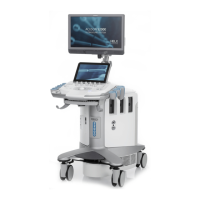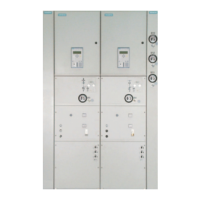10 Virtual Touch Applications
10 - 14 Instructions for Use
Shear Wave Velocity and Elasticity Measurements in Liver Assessment
Virtual Touch quantification can provide a reliable measure of shear wave velocity and elasticity
in the liver when proper technique is used.
The following factors can result in abnormally high values in the liver:
Excessive transducer pressure on the liver, such as in subcostal scanning where
transducer pressure is used to displace intervening bowel gas
Elevated central venous pressure due to heart failure or valsalva maneuvers (including
deep inspiration and breath hold)
Significant portal hypertension
Poor contact with the skin surface or oblique transducer angles relative to the liver
Elevated aminotransferase levels
Food intake less than 2 to 3 hours prior to examination
Liver location (liver segment measured)
Liver fibrosis
The following techniques should be used in liver assessment to ensure measurements using
Virtual Touch quantification in liver assessment are reliable:
Measurements are most reliable at least 1 cm to 2 cm deep to the liver capsule using the
intercostal scanning approach along a mid-axial line in liver segments 5 and/or 8.
The patient should breathe normally with measurements taken after the patient is asked to
momentarily suspend respiration.
Multiple measurements in the same location should be taken to ensure measurement
repeatability with the median shear wave velocity and elasticity value representing the
most reliable single measure when there are measurement outliers.
The Virtual Touch quantification measurement region of interest (ROI) should be
maintained between 3 cm and 6 cm depth whenever possible to minimize the effect of
depth on measurements. Values can be higher at depths less than 3 cm and lower at
depths greater than 6 cm.
An IQR/median shear wave velocity and elasticity ratio less than 0.3 is indicative of reliable
liver assessment with Virtual Touch quantification. A higher ratio indicates significant
variability in the measurements, decreasing the reliability of measurement results.

